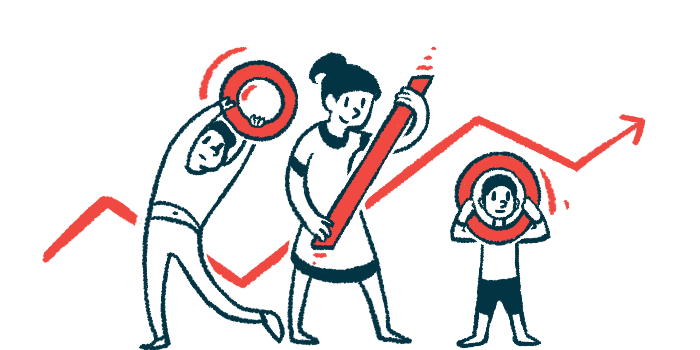PAH Places Great Burden on Patients, Healthcare in Sweden
Study highlights need for earlier diagnosis and more effective treatments

Pulmonary arterial hypertension (PAH) is associated with high utilization of healthcare resources by patients and with productivity loss, starting years before diagnosis, according to a study in Sweden.
“The economic and clinical burden associated with PAH suggests that strategies for earlier diagnosis and more effective treatments are warranted,” researchers wrote.
The study, “Societal costs associated with pulmonary arterial hypertension: A study utilizing linked national registries,” was published in the journal Pulmonary Circulation.
Researchers use registry data of 749 adults with PAH
PAH is caused by the narrowing of pulmonary arteries, which transport blood to the lungs, restricting blood flow and causing high blood pressure, or hypertension. Early symptoms include shortness of breath, exhaustion at rest or with light exercise, and fatigue. In later stages, it can cause chest pain and fainting.
To estimate the societal costs of PAH in Sweden, investigators there conducted a study with 749 adults with PAH diagnosed from January 2008 to June 2019, from the Swedish PAH & Chronic Thromboembolic Pulmonary Hypertension registry.
A group of 3,795 matched controls, without a PAH diagnosis, was selected from the national Swedish population registry. Data from patients were extracted five years before to five years after diagnosis.
The mean age was 62 years, and 64% were female. Education level was lower among PAH patients, who had more co-existing disorders, namely hypertension, ischemic heart disease, diabetes, and kidney disease.
The main income source for both groups was age pension. The proportion of people in the PAH group was significantly higher for receiving disability pensions (15% vs. 3% in the control group) or sickness benefits (7% vs. 1%) whereas income from employment was higher in the control group (34% vs. 15%). Disposable annual income was significantly lower for people with PAH.
When looking into the utilization of healthcare resources, the number of hospitalizations was five times higher for PAH patients than control participants during the study period, with a maximal difference occurring in the year after diagnosis (2.0 vs. 0.2 visits per person).
The economic and clinical burden associated with PAH suggests that strategies for earlier diagnosis and more effective treatments are warranted.
Days in hospital six times higher for PAH patients
Likewise, during the study duration, the number of days in hospital was about six times higher for PAH patients (5.9 vs. 1.0 days per person and year).
For the mean number of outpatient visits, the difference was already significant five years before diagnosis — 0.9 visits in PAH patients vs. 0.7 in the control group — and increased in the year after diagnosis (5.3 vs. 0.9).
The number of daily medication doses did not differ between the groups five years before diagnosis, but the mean costs were already significantly higher for PAH patients (€514 vs. €200, or $561.17 vs. $218.35).
In the year after diagnosis, the doses used by PAH patients were significantly higher than in the control group (1,702 vs. 439 doses per person), as were the costs involved (€28,445 vs. €251, or $31,055.40 vs. $274.03).
The researchers noted that it is unclear whether higher healthcare costs for PAH patients before diagnosis are related to a delay in diagnosis, since early symptoms are unspecific, or to diseases that might be risk factors for PAH.
“A timely diagnosis of PAH and initiation of disease specific treatment will likely have prognostic benefit and lessen the burden and costs of living with PAH for the patient as well as the society,” the scientists wrote.
Number of days on sick leave significantly higher for people with PAH
When looking into productivity loss, the number of days taken for sick leave for people with PAH was significantly higher than in the control group, even five years before diagnosis (35 vs. 14 days per person). One year after diagnosis, this difference was markedly higher (130 vs. 13 days in the control group).
PAH patients also had significantly more days with disability pension than controls five years before diagnosis (114 vs. 36 days per person), a difference seen during the whole study duration.
Overall, societal costs were considerably higher for PAH patients in Sweden. Before diagnosis, the main costs for PAH patients concerned productivity loss (76% of the total), while the cost of hospitalizations constituted 15%. After diagnosis, the main costs (two-thirds) were prescribed medications, whereas hospitalizations and productivity loss each constituted 16%, and outpatient care 4%.
Finally, the survival rate was significantly lower for PAH patients, with 49% surviving five years after diagnosis, versus 91% of controls.
“The considerably higher mortality rate in the PAH group highlights the need for earlier diagnosis, a risk stratification tool easy to use in clinical practice as well as new and improved treatments, and likely, earlier referral for lung transplantation,” the researchers wrote.
“The present study adds new and important knowledge regarding the burden of PAH for the healthcare system, the society, and the patients with PAH,” they added. “However, to understand how this burden can be reduced, detailed studies on direct and indirect costs are warranted.”









